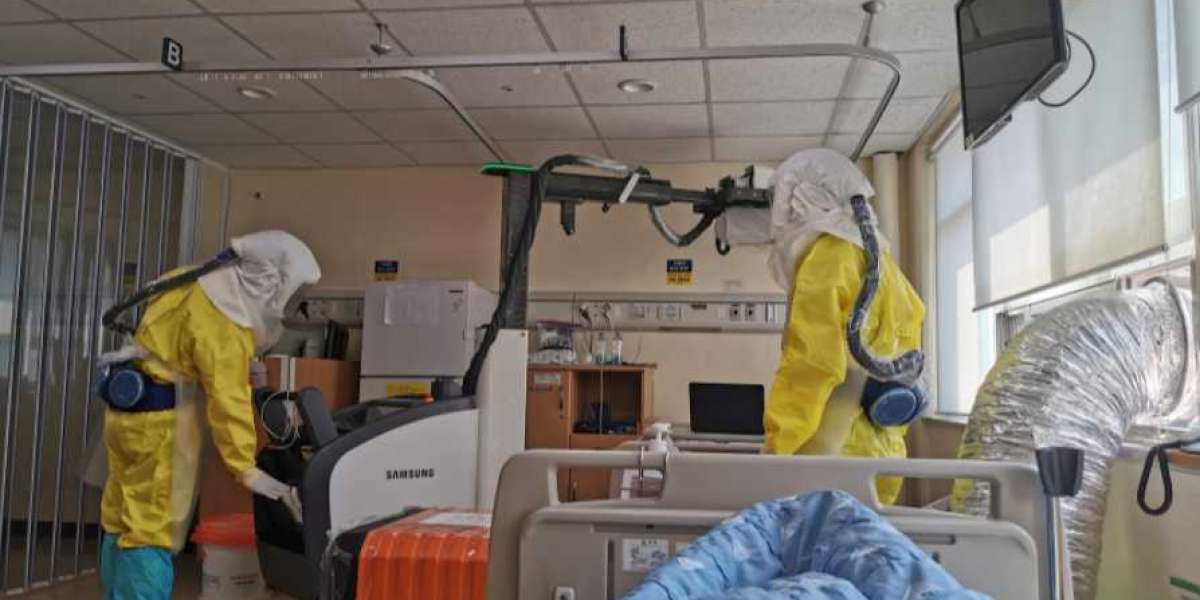Because of the high number of serious cases in Korea, more private hospitals around the nation are committing their resources to only treating Covid-19 patients.
According to the Central Disaster Management Headquarters on Tuesday, a total of eight hospitals have been recognized as Covid-19-specific facilities, with the designations taking effect immediately. Gimpo Woori Hospital, Gumdan Top General Hospital, Jainmedi Hospital, Serim General Hospital, Chung Hospital, Kangnam General Hospital, Davos Hospital, and Hallym Hospital are among the eight facilities listed above. St. Peter's Hospital in Uijeongbu will also be recognized in the near future.
Hospitals such as Kangnam General Hospital and Davos Hospital, which had already allocated some of their resources to the treatment of Covid-19 patients, will now devote all of their resources to the virus's treatment as well.
With the addition of new hospitals to the cause, Korea's total number of Covid-19-dedicated hospitals around the country has climbed to 14. There are around 2,700 hospital beds projected to be available at the newly authorized 12 hospitals.
Covid-19 centers have already been established at three hospitals: Hyemin Medical Center, New Sungmin Medical Center, and Hanyang Medical Center since December. It has also been like way since the third wave of the epidemic hit in December last year, when Bagae Hospital and Bestian Hospital both began working as such.
Many of the heads of small and medium-sized hospitals from the areas of Chungcheong, Jeolla, and Daegu answered positively when the headquarters urged them [to convert to functioning as a Covid-19-dedicated hospital] during a meeting conducted on Tuesday, according to an official from the headquarters. The number of Covid-19-dedicated hospitals is expected to expand from 14 to 20 by the end of this month, according to the team.
In conjunction with the recent decision of Seoul National University Hospital (SNUH), one of Korea's largest national university hospitals, to allocate extra Covid-19 hospital beds to patients who are dangerously ill with the virus, such measures are being considered.
During a recent interview with the JoongAng Ilbo, SNUH director Kim Yon-su stated that his institution would provide an additional 100 bed capacity while collaborating with three other hospitals — Inje University Paik Hospital, Bumin Hospital, and Daerim St. Mary's Hospital — to transfer its intensive care unit (ICU) patients who have recovered from Covid to other smaller hospitals. Patients who are critically ill with Covid-19 are frequently suffering from underlying conditions and must remain in intensive care units (ICUs) long after they have recovered from the virus, making it difficult for new critical Covid patients to secure a bed.
The latest hospital designations in Korea are intended to provide greater breathing room to health-care institutions in the face of an increase in Covid-19 instances and the influx of critically ill patients.
The number of critically sick patients in the country has surpassed 1,000 for the second time in as many days, with 1,022 critically ill patients as of Monday midnight.
These are patients who require oxygen therapy (such as high-flow oxygen therapy), mechanical breathing (being placed on a respirator), extracorporeal membrane oxygenation (ECMO), or continuous renal replacement therapy (CRRT) (CRRT).
The number increased by 25 from the previous day, bringing it close to the all-time record of 1,025, set on Sunday.
The elderly (those aged 60 and over) accounted for 85.3 percent of all critical cases, with 368 persons in their 70s, 352 in their 60s, and 152 in their 80s among those who died.
As a result of the increase in the number of critically ill patients, it was discovered that over 80 percent of I.C.U. beds across the country were full.
A total of 80.7 percent of intensive care unit beds across the country were filled as of 5 p.m. Monday, with 258 of 1,337 beds available. The government considers occupancy levels more than 75% to be a red signal.
The occupancy rate in the greater Seoul region, which includes the cities of Seoul, Incheon, and Gyeonggi and is where the majority of Covid-19 patients reside, was 87.7 percent, according to the latest data. In Seoul, 42 beds were available, while 51 beds were available in Gyeonggi and 10 beds were available in Incheon.
President Moon Jae-in expressed concern over the recent increase in serious cases and urged national university hospitals to concentrate their medical expertise on treating dangerously ill Covid-19 patients. He also requested collaboration from private hospitals.
The president stated in a Cabinet meeting Tuesday that "we must focus all of our efforts to stabilizing the viral situation as soon as possible while heightened distancing measures are adopted."
"Above all, the most important thing we can do to prepare ourselves for another disaster is to significantly strengthen the medical response system," Moon said, urging for the provision of more hospital beds and medical workers.
The president went on to say that "many private medical institutions are getting together [to designate more hospital beds]," underscoring the critical need for private hospitals to work together to meet the need for extra beds.
"We urge that all medical capacities, both public and private, come together to preserve the lives and safety of the people during these trying times," he stated in his statement.
According to the Korea Disease Control and Prevention Agency, an additional 5,202 daily new Covid-19 infections were recorded on Tuesday, increasing the total number of cases to 575,615. (KDCA). While the number of cases was significantly lower from the previous three days, this was mainly owing to fewer testing being performed over the weekend.
The number of people infected with the novel Omicron strain of the coronavirus increased by 49 in a single day, prompting health officials to issue an alarm. Thirty-three of these cases were caused by locally transmitted disease, whereas sixteen cases were caused by imported disease from abroad.
The KDCA said that twenty of the domestic cases were linked to a mass Omicron infection that originated in a kindergarten in Iksan, North Jeolla. It was discovered that one of the teachers had visited another kindergarten in the adjacent Buan County, raising concerns about the possibility of a further spread.
Over the last week ending Saturday, the Centers for Disease Control and Prevention (CDC) reported that the Omicron virus strain has risen to become the dominant strain in the United States, accounting for more than 73 percent of all new coronavirus infections.
The Republic of Korea has now reported a total of 227 Omicron cases since the country's first case was discovered on December 1. The Omicron variety is three times more infectious than the Delta type, which is still the most common.
It was recently said in a briefing that "there is a probability that Omicron would become the dominant strain in one to two months" by Lee Sang-won, chief of the epidemiological investigations team at the Central Disaster and Safety Countermeasure Headquarters.



